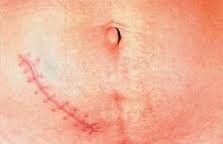 Uterine fibroids, also called myomas, affect between 20% and 80% of women depending upon the statistical analysis used. Many do not grow large enough to require treatment or cause any symptoms. However, they will require treatment if they cause pressure to pelvic organs, start to grow rapidly, cause abnormal bleeding or are the root problem of infertility.
Uterine fibroids, also called myomas, affect between 20% and 80% of women depending upon the statistical analysis used. Many do not grow large enough to require treatment or cause any symptoms. However, they will require treatment if they cause pressure to pelvic organs, start to grow rapidly, cause abnormal bleeding or are the root problem of infertility.
Fibroids can occur in several different areas of the uterus. Most often these are tumors which grow inside the muscle of the uterine wall, called intramural. At other times they grow just below the mucosal wall, submucosal or grow within the cavity of the uterus, intra-cavity. Those that grow on the outside wall of the uterus are called subserous and some of those are connected to the uterus by a stalk, pedunculated.
The research regarding the infertility and uterine fibroids is not conclusive. Some research shows that there is no decrease in the number of women who can conceive a pregnancy while others demonstrate that fibroids affect miscarriage, premature labor and infertility. When the fibroid grows inside the cavity it will definitively have an impact on infertility and can also cause recurrent miscarriages.
Treatments for uterine fibroids will depend upon the woman’s desire to retain fertility, the woman’s age at the time she requires treatment and the number of symptoms that the tumors are causing. Uterine fibroids that are causing significant symptoms need  appropriate treatment while women who have smaller fibroids with little to no symptoms may be able to go without treatment until menopause when the majority of uterine fibroids shrink.
appropriate treatment while women who have smaller fibroids with little to no symptoms may be able to go without treatment until menopause when the majority of uterine fibroids shrink.
As long as the fibroid is not within the cavity many women go on to have successful pregnancies. However, the location of the fibroid plays a strong role on how to approach them. Each of the different treatment modalities can potentially result in scar tissue on the uterine wall which significantly impacts pregnancy because over these areas the placenta cannot implant and receive any nutrition for the baby.
Scar tissue is fibrous connective tissue that occurs where an injury, cut or disease has been and then heals. The scar tissue is thicker and more dense than the surrounding tissue because it also has a limited blood supply. Although scar tissue takes the place of damaged tissue it has limited function, including movement and circulation.
When scar tissue develops inside the uterus, on the uterine wall, it significantly reduces the surface area available to the developing fetus for implantation. For this reason, women who are interested in maintaining their fertility must be diligent in their choices of treatment for fibroids which may impact their fertility.
 Some holistic practitioners believe that using specific enzyme therapies can help the body clear itself of scar tissue in the reproductive organs and reduce the immunological response that increases the amount of scar tissue developed. This particular treatment protocol is advertised for women who suffer from uterine fibroids, inflammation, endometriosis and recurrent miscarriages. There are currently several systemic enzymes on the market, none of which have been proved through clinical trials that they are able to improve the fertility and decrease the amount and thickness of scar tissue that develops on the uterine walls from these particular medical conditions.
Some holistic practitioners believe that using specific enzyme therapies can help the body clear itself of scar tissue in the reproductive organs and reduce the immunological response that increases the amount of scar tissue developed. This particular treatment protocol is advertised for women who suffer from uterine fibroids, inflammation, endometriosis and recurrent miscarriages. There are currently several systemic enzymes on the market, none of which have been proved through clinical trials that they are able to improve the fertility and decrease the amount and thickness of scar tissue that develops on the uterine walls from these particular medical conditions.
There are currently several surgical procedures available for the treatment of uterine fibroids, most of which will leave at least a small scar on the wall of the uterus. If your surgeon recommends any new procedure it is important for the patients to do their research into efficacy and effectiveness of the procedure. Look through peer-reviewed medical journals for studies which publish actual results. Be sure to ask questions of your provider about the outcomes that are both published and that they themselves have seen in their practice. Look at the advantages and disadvantages of all the available options before making your decision.
Uterine fibroids which are located inside the uterine cavity will almost always cause abnormal bleeding and cramping. They will also significantly impact fertility and, while the removal may result in scar tissue, keeping them intact will also reduce the chances that a woman will conceive. Surgical procedures can include hysteroscope or resectoscope of a myoma. In the hands of a skilled surgeon most of these can be removed in the outpatient setting.
For women who are not concerned with maintaining their fertility removal of the uterus while maintaining the integrity of the ovaries is an option which removes the large tumors from the pelvic region while maintaining her hormonal balance.
Unfortunately, uterine fibroids can also result in scar tissue on the uterine wall through minor tears or healing of the damage done by the tumors growing inside the walls. Each woman must have her situation evaluated individually in order to ascertain the damage done by the scar tissue and how it may or may not impact her fertility.
RESOURCES
Brigham and Women’s Hospital: Uterine Fibroids
http://www.brighamandwomens.org/Departments_and_Services/obgyn/services/mininvgynsurg/mininvoptions/fibroids.aspx
Oregon Health & Science University: Fibroid Emolization
http://www.ohsu.edu/fibroid/common.html


Leave a Reply